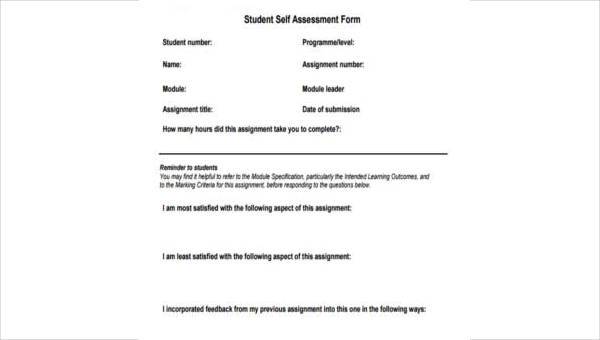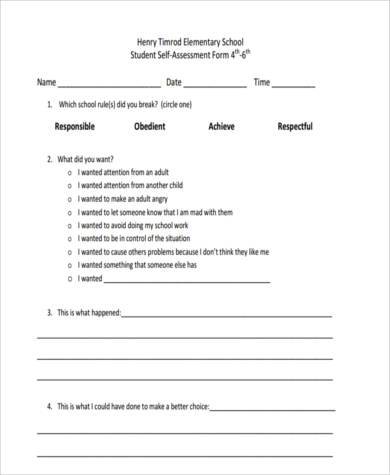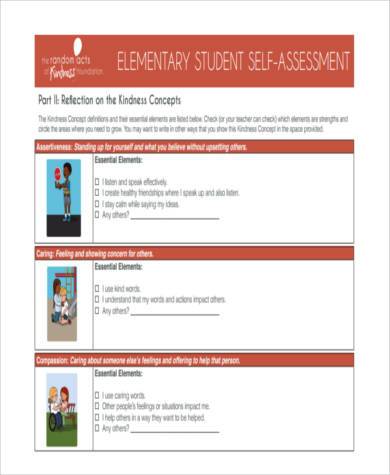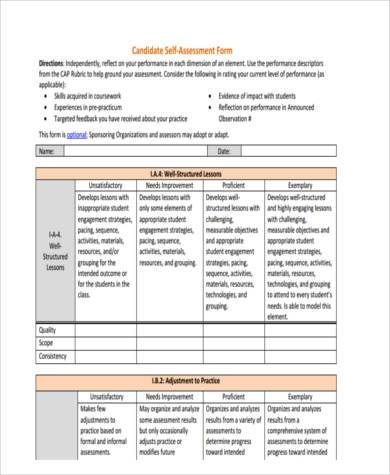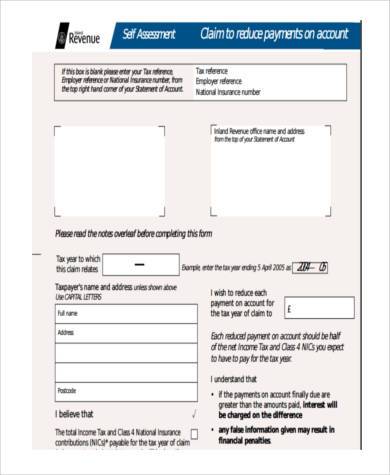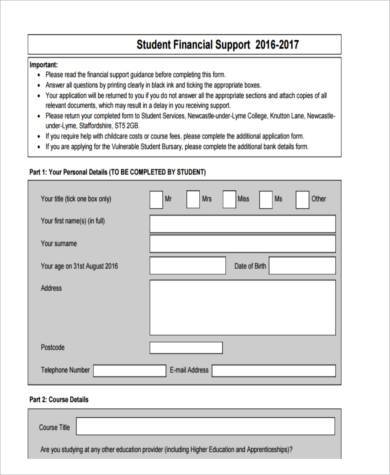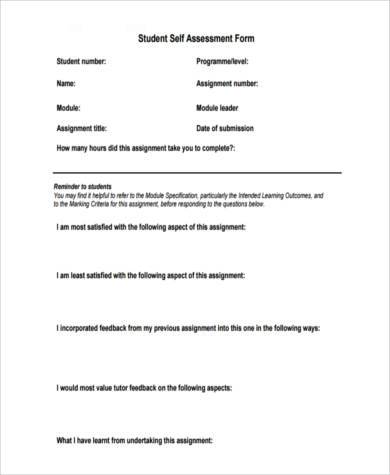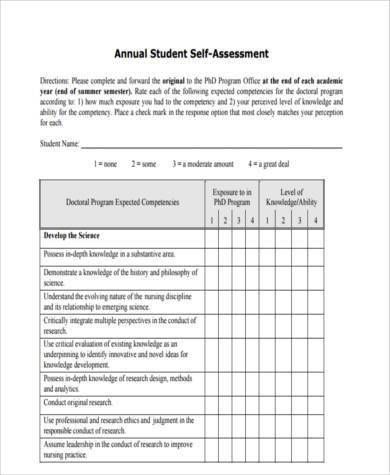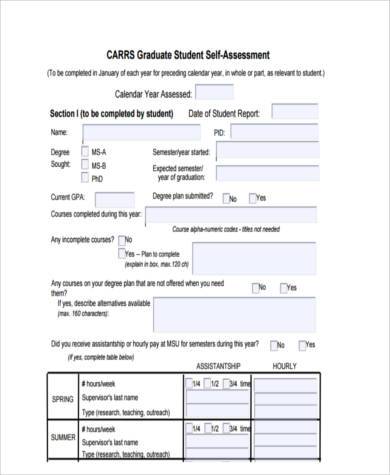Assessments play a vital role in the learning process of both teachers and students. A Student Self-Assessment is an opportunity for students to evaluate their own work and learning progress, identify their skills and abilities, determine their weak spots, revise their work, and to set realistic goals.
Student Self-Assessments aid students in staying involved and motivated. It also encourages them to reflect on their responsibility as a student to develop and enhance their learning. Hundreds of Assessment Forms can be downloaded online; however, not all of them are able to cover the most crucial aspects that need to be included in Student Assessment Forms. Download our Self Assessment Forms to get reliable sample forms in a matter of seconds.
High School Student Self-Assessment Form
Elementary Student Self-Assessment Form
Student Behavior Self-Assessment Form
Student Loan Self-Assessment Form
Student Financial Self-Assessment Form
The Advantages of Conducting Student Self Assessments
- Allows quick evaluations of a student’s learning
- Provides a timely and effective feedback
- Enables teachers to provide feedback pertaining to a student’s learning
- Allows students to gauge their level of understanding
- Allows self-monitoring and determining one’s skills
- Increases student motivation
- Helps students to harness various skills to help them meet the expectations of future employers
How to Incorporate Student Self-Assessments in the Learning Place
- Figure out the tasks that a student must do and these will be the basis for assessment.
- Establish a set standard for criteria.
- Let students know and understand what is expected of them.
- Motivate students by providing them with tasks that allows them to determine the objective of their work and figure out ways for improvement.
- Give students an opportunity to take ownership of the criteria for their evaluations.
- Let students explain or talk about the decisions and problem-solving methods they had to do as they worked on a project.
- Let students outline the strong and weak points of conducting the project.
- Provide students with feedback about their work.
Student Conference Self-Assessment Form
Student Self-Assessment Form in PDF
Annual Student Self-Assessment Form
Graduate Student Self-Assessment Form
Incorporating Self-Assessment on students also needs to be strategically enhanced from time to time to motivate students and encourage them to provide a more objective-based evaluation. Below are methods of enhancing Student Self-Assessments.
Conduct a Student-led Conference
Student-led and three-way conferences allow a student to properly reflect on the learning that has taken place over a period of time and enable the student to present it to their teacher and parents in the form of a portfolio.
Formulating a Rubric
Rubrics are a valuable tool when conducting evaluations because they enable the listing down of proper and set criteria, allow multiple levels for gauging performance, and give students the opportunity to monitor their progress better.
A teacher may provide copies of the rubric as well as provide them with models or examples to show the important aspects of the assignment. Through this method, students will be able to monitor their work and reflect on their progress to determine what needs to be improved.
Related Posts
-
How to Conduct a Risk Assessment? [ With Samples ]
-
FREE 4+ Sample Child Assessment Forms in MS Word | PDF
-
FREE 11+ Sample Financial Assessment Forms in PDF | MS Word | Excel
-
FREE 7+ Sample Health and Safety Risk Assessment Forms in PDF | MS Word
-
FREE 8+ Sample Supplier Assessment Forms in PDF | MS Word
-
FREE 7+ Sample Caries Risk Assessment Forms in PDF | MS Word
-
FREE 7+ Sample Management Risk Assessment Forms in PDF | MS Word
-
FREE 7+ Sample Infection Control Assessment Forms in PDF | MS Word
-
FREE 8+ Income Assessment Form Samples in PDF | MS Word
-
FREE 8+ Education Assessment Form Samples in PDF | MS Word
-
FREE 22+ Sample Self-Assessment Forms in PDF | MS Word | Excel
-
FREE 8+ Job Assessment Form Samples in PDF | MS Word
-
Student Observation Form
-
Student Assessment Form
-
FREE 11+ Assessment Forms for Teachers in PDF | Ms Word | Excel
